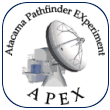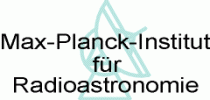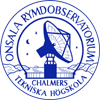Bolometer observing methods
Target source observations
Switch modes
- Wobbler on-off mode [Decommissioned since July 2016]
- Continuous integration (no switching)
LABOCA is a DC-coupled instrument, thus this switching mode needs to be combined with one of the following observing patterns.
Observing patterns
- Spiral mode
In this mode the telescope moves - relative to the tracking position - from a start radius to an end radius along a spiral pattern. This allows to obtain a fully sampled map of the total field-of-view (FoV) of LABOCA. The spiralling is done with a constant angular speed. - Raster map in spiral mode
One of the above spiral mode combined with a raster pattern. While this provides only a very small increase of the map size, the main advantages are an even denser sampling of the map, and an increased integration time. - On-The-Fly mapping (OTF)
The On-The-Fly mapping procedure allows to scan continuously along one direction in a rectangular map while writing out data after given time intervals. The spacings along the scanning axis should not exceed about one third of the beam to avoid beam broadening.
- Spiral mode
Depending on the source size, a target is usually observed through a raster map in spiral mode or an OTF map. By introducing offsets from the catalog position (mosaic), also large or irregularly shaped objects can be mapped with a homogenous noise over the area of interest. See further below to know when this mosaic technique is recommended.
Calibration observations
In addition, there exist a few observing methods especially for calibration observations.
- Skydip
This type of observation is done in order to measure the emission of the atmosphere. The telescope moves slowly from very high to very low elevation, hereby taking data continuously. The absolute temperature scale is established through a measurement on a hot load just before the skydip. The zenith opacity can then be estimated from a fit to the data. - Pointing
Contrary to heterodyne observations (where continuum pointing is performed through a cross-scan), for LABOCA we perform a simple ON-measurement combined with the spiral observing pattern (see above). This yields a fully sampled map, where the pointing offsets can be estimated by a 2-dimensional Gaussian fit. - Focus
To estimate the focus position, the telescope is integrating on a strong point source, while moving the subreflector in steps around the current position. Direct ON-measurements can be done with bright planets (Venus, Mars, Jupiter and Saturn) and fainter sources (e.g. pointing sources) can also be used taking small maps (similar to pointing scans) and measuring the focus corrections from fits to the beam shape.
Absolute flux calibration is performed by a raster map in spiral mode on a planet or a secondary calibrator. See the calibration section for details.
Observing strategy depending on the target
The observing patterns described above can be customized in order to provide a homogenous coverage of the area of interest. In addition, LABOCA's reference channel can be changed to a more sensitive one than that in the geometric centre. In the following we give an overview over various observing strategies for various source sizes.
- Unresolved or very compact sources (<2′)
These sources can be mapped with a standard raster map in spiral mode, which will provide a fully sampled map with homogenous noise for an area of about 8′ diameter. In addition, bolometer channel 13 should be selected as reference channel, since it is located in the most sensitive area of the array. - Compact sources (<8′)
For these sources the geometric centre of the array should be selected as reference channel (which is the default). These sources should be observed with a standard raster map in spiral mode as well. - Extended sources <15′
For sources which are kind of regularly extended in two dimensions we have developed an optimized raster map setup. This setup will yield a homogenous coverage of a rectangular area of about 15′×15′. - Extended sources <30′
As above, for an area of 30′×30′. - Very extended sources (∼1° or larger)
These sources can be mapped using a mosaic of spiral raster maps, or with appropriately sized On-The-Fly maps, or both, in order to avoid systematic effects. While for smaller areas the overhead for OTF maps is significantly larger, this difference is less important for big maps. - Irregularly shaped extended sources
In order to map an irregular area with a homogenous noise level, these objects should ideally be observed with a mosaic of the standard maps described above. Example: An edge-on galaxy, with a major axis extent of 15′ oriented with a position angle of 60°, could be observed by a mosaic of 2 standard spiral raster maps (for sources <8′), separated by ∼10′. This can be done by specifying offsets of (+4′,+2′) and (-4′,-2′) in RA/Dec for the two maps, respectively.




